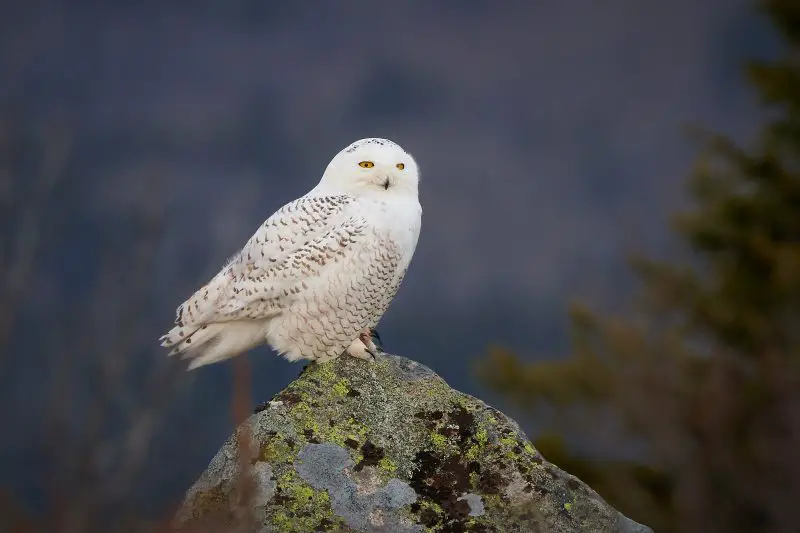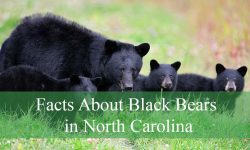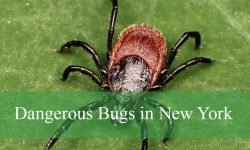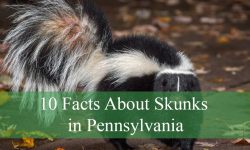Snowy owls have an unmistakable presence in Maine’s frozen landscapes. Their bright white plumage, piercing yellow eyes, and quiet aerial movements create an atmosphere of mystery that has fascinated biologists and birdwatchers for decades. Winter, however, reveals behaviors that go far beyond simple migration. These owls display subtle strategies, adaptive traits, and surprising habits that allow them to survive months of harsh cold while maintaining remarkable hunting precision.
Maine’s wide-open marshes, stretches of coastline, and snow-covered agricultural fields mimic the Arctic tundra that snowy owls call home for most of the year. When temperatures drop and the northern hemisphere shifts into winter, these birds engage in movements and behaviors that scientists continue to study. Understanding these patterns not only paints a clearer picture of their winter ecology but also helps with conservation, especially during years of irruptions when large numbers appear farther south than expected.
This article explores the lesser-known aspects of snowy owl behavior in Maine, revealing the ecological strategies and scientific insights behind their winter presence. You’ll find in-depth explanations supported by observational research, combined with a natural storytelling style to immerse you in the world of one of winter’s most iconic raptors.
Understanding Snowy Owls in Maine’s Winter Landscape

Why Snowy Owls Migrate Into Maine
Snowy owls migrate into Maine during winter when prey availability in the Arctic becomes unpredictable. These movements are not always routine migrations but are often linked with natural population cycles of lemmings, their primary northern prey. When lemming numbers crash, snowy owls disperse southward in search of more stable hunting grounds.
In Maine, they find landscapes similar to their tundra home. Wide, open fields and shoreline dunes allow them to hunt efficiently using the same strategies they employ in the far north. These habitats offer excellent visibility, enabling owls to spot small mammals from long distances.
This migration is also influenced by age and competition. Younger owls, less experienced and often pushed out by dominant adults, travel farther south. Maine becomes a seasonal refuge for these individuals, offering enough prey diversity to help them survive their first winter.
Maine’s Habitat Resembling the Arctic
What makes snowy owls select Maine over other northeastern states is the state’s abundance of tundra-like habitats. Airports, coastal marshes, blueberry barrens, and frozen fields give these birds the open space needed to detect prey visually rather than relying on dense-forest hunting methods used by other owl species.
These open areas also provide ideal perches—snowy owls prefer sitting on slight elevations such as dunes, hay bales, driftwood, and even rooftops. From these vantage points, they monitor movement with remarkable accuracy. Their eyesight remains effective even in dim conditions, a necessary adaptation for winter life.
The coastal regions, especially around Portland, Biddeford, and Down East Maine, offer additional prey diversity. Here snowy owls hunt water birds when small mammals are scarce, a strategy not as commonly documented in other owl species.
How Snowy Owls Adapt Physiologically to Maine’s Winter Cold
Snowy owls are extraordinarily well adapted to winter conditions. Their dense plumage includes feathers that cover their legs and toes, creating natural insulation. This allows them to retain body heat even when temperatures dip below zero.
Their metabolism also shifts in winter. Snowy owls can enter periods of lower energy expenditure when prey becomes scarce. This metabolic flexibility helps them survive stretches without eating, though extended scarcity still presents risks for younger birds.
A third adaptation involves their ability to sit motionless for long periods. Remaining still conserves energy and reduces heat loss. Unlike many other raptors that constantly patrol their territories, snowy owls rely heavily on patience during the winter months.
Secret Winter Behaviors of Snowy Owls in Maine
Snowy Owls Use Immobile Hunting Strategies
One of the most fascinating winter behaviors is the owl’s reliance on stationary hunting. Snowy owls in Maine spend long hours perched in open fields, scanning for prey with minimal movement. This method reduces detection by prey and conserves energy during cold weather.
Remaining immobile also protects them from wind exposure. By facing away from the wind or positioning their bodies close to the ground, snowy owls limit heat loss. This behavior resembles techniques used in the Arctic, indicating how deeply their adaptations are tied to their native environment.
These silent hours of stillness allow researchers to track and observe them more reliably. Because snowy owls do not hide in forests, their winter behavior becomes a valuable subject of scientific study.
Adapting Their Diet to Maine’s Winter Prey Availability
While lemmings dominate their Arctic diet, snowy owls in Maine rely on a wider range of prey. Small mammals such as voles, mice, and squirrels become primary targets, especially in inland fields. In coastal areas, they frequently hunt ducks, gulls, and shorebirds when mammal populations drop.
This dietary flexibility is essential to their survival. The more diverse prey base reduces dependency on any single species and allows owls to remain in one location for extended periods. It also demonstrates their opportunistic nature, a trait that contributes greatly to their winter success in Maine.
During harsher winters, snowy owls have been documented hunting larger birds. This behavior is energy-intensive but sometimes necessary when food sources become scarce.
Territoriality Increases Among Wintering Snowy Owls
Snowy owls display stronger territorial instincts in Maine during winter than many people realize. Although they are not strongly territorial in the Arctic outside nesting season, the scarcity of winter prey encourages them to defend prime hunting areas.
This territoriality is most pronounced in open flat habitats. Dominant owls often chase away younger individuals or other raptors to maintain control over food resources. These interactions can be intense, involving vocalizations, aerial displays, and extended standoffs.
Understanding this behavior helps explain why snowy owls may remain in the same field or shoreline stretch for weeks or even months, showing consistent site fidelity throughout the winter season.
Snowy Owls Use the Coastline as a Winter Hunting Highway
Coastal Maine often serves as a winter migration corridor and feeding ground. The abundance of seabirds along the shoreline provides a reliable prey supply, especially during mild winters.
Snowy owls use dunes, rocky outcrops, and driftwood as hunting perches. From these elevated sites, they watch for vulnerable birds moving between feeding and roosting sites. Their hunting style involves short, powerful flights across open sand or shallow bays.
This coastal behavior mirrors their hunting patterns in Arctic coastal regions, where they often target seabirds during summer. Maine becomes a winter extension of these natural hunting systems.
Snowy Owls Exhibit Surprising Daytime Activity
Unlike most North American owls, snowy owls remain diurnal, even in winter. This is partly due to their Arctic origin, where the sun may stay above the horizon for 24 hours during summer.
In Maine, this diurnality continues. Observers often spot snowy owls hunting at dawn, midday, and early afternoon. This behavior provides unique viewing opportunities but also gives scientists insight into their energy budgets and activity cycles.
Daytime movement also aligns with prey cycles. In winter, many small mammals forage during daylight hours to reduce nighttime energy loss, making them more accessible to snowy owls.
How Snowy Owls Conserve Energy During Long Maine Winters
Energy conservation is critical for snowy owls. Their winter behaviors reflect this priority at every level. They choose open, wind-protected perches to minimize exposure. They limit unnecessary flight, preferring to glide short distances instead of engaging in extended chases.
Another strategy is thermoregulation through posture. Snowy owls fluff their feathers to create insulating air pockets. When resting, they tuck their legs beneath their bodies to reduce heat loss.
Finally, snowy owls often remain in one productive feeding site for long periods rather than wandering. This reduces energy spent on territorial exploration and keeps them within reliable hunting zones.
Nighttime Behaviors Remain an Overlooked Part of Their Ecology
Although primarily active during the day, snowy owls do show nighttime behaviors that are often overlooked. Researchers studying wintering owls in Maine have documented occasional nocturnal hunts, especially during moonlit nights.
These nighttime hunts occur when prey activity intensifies under snow cover. Snowy owls rely more on sound during these conditions, listening for movement beneath the snow crust.
Nighttime perch switching also happens. Owls may move short distances to avoid predators or human disturbance or to reposition themselves for better morning hunting opportunities.
Interactions With Other Raptors in Maine
Snowy owls share winter landscapes with bald eagles, red-tailed hawks, northern harriers, and great horned owls. These interactions shape their winter behavior significantly.
Bald eagles are their primary competitors in coastal regions. Eagles often attempt to steal snowy owl kills, forcing the owls to become more cautious around open carcasses.
Great horned owls, though less common in open fields, remain a threat because they are strong nocturnal predators. Snowy owls avoid dense forest edges where great horned owls dominate.
These inter-species dynamics add complexity to how snowy owls choose winter roosting and hunting locations across Maine.
The Influence of Irruption Years on Maine’s Snowy Owl Population
Understanding Irruption Events
Irruptions are periodic population surges when an unusually large number of snowy owls migrate south. These events occur approximately every four years, typically following summers with extremely high lemming populations.
During irruption years, Maine becomes a hotspot, drawing dozens more owls than usual. This sudden influx provides a rare opportunity for scientific observation, allowing researchers to study behavior variations between adults and juveniles.
The increased population also spreads snowy owls into less typical habitats, including suburban rooftops, frozen lakes, and even busy airports.
How Irruptions Affect Winter Behaviors
With more individuals present, competition intensifies. Snowy owls spread out farther across the state, establishing territories in unlikely areas. During these winters, birdwatchers may notice owls hunting in places that rarely host them in normal years.
Irruptions also reveal greater dietary flexibility. Owls may rely more heavily on birds when rodents decline due to deep snow cover. This shift influences their daily movement patterns and hunting strategies.
These population surges help researchers map long-distance dispersal and survival rates among juvenile birds.
FAQs About Snowy Owls in Maine
How often do snowy owls appear in Maine?
Snowy owls appear annually in Maine, but their numbers vary widely depending on prey availability in the Arctic. During non-irruption years, sightings are scattered and limited. In irruption years, their numbers increase dramatically.
Why do some snowy owls stay all winter while others leave early?
It depends on prey supply and age. Young owls often stay in Maine longer because they struggle to compete in the Arctic. Adults may return north earlier if conditions improve.
Where are the best places to see snowy owls in Maine?
Coastal areas, airport fields, marshes, and open agricultural zones are prime viewing locations. Scarborough Marsh, Biddeford Pool, and Portland Jetport are reliable winter hotspots.
Are snowy owls dangerous to humans?
Snowy owls are not dangerous unless approached too closely or disturbed. They may defend themselves if cornered but prefer to avoid human interaction.
What do snowy owls eat during Maine winters?
Their diet includes voles, mice, squirrels, ducks, gulls, and occasional shorebirds. They select prey based on availability and energy return.
Do snowy owls hunt at night in Maine?
Yes, although they are primarily diurnal, snowy owls may hunt at night, especially during moonlit hours or when conditions favor nocturnal prey movement.
How do snowy owls survive extreme cold?
They survive through a combination of dense insulating feathers, metabolic adaptations, low-energy hunting strategies, and behavioral thermoregulation.
Are snowy owls protected in Maine?
Yes. They are protected under the Migratory Bird Treaty Act, which prohibits harming or harassing them.
Conclusion
Snowy owls bring a sense of Arctic wilderness to Maine each winter. Their secretive behaviors, from energy-saving hunting strategies to adaptive diets and territorial displays, reveal a species that thrives in some of the harshest conditions on Earth. Understanding these winter habits helps deepen appreciation for their resilience and highlights the importance of conserving the open landscapes they rely on.
As winters continue to shift due to climate patterns, ongoing research in Maine will play a critical role in monitoring their survival, movements, and long-term ecological needs. Snowy owls remain among the most captivating predators of the northern hemisphere, and Maine’s winter terrain provides one of the best windows into their extraordinary natural history.






